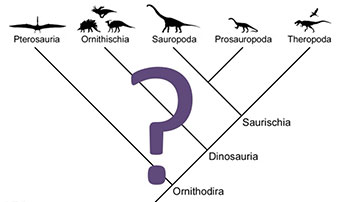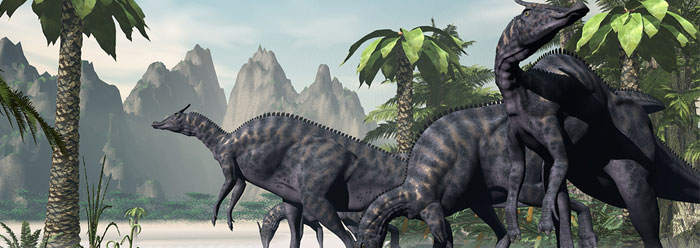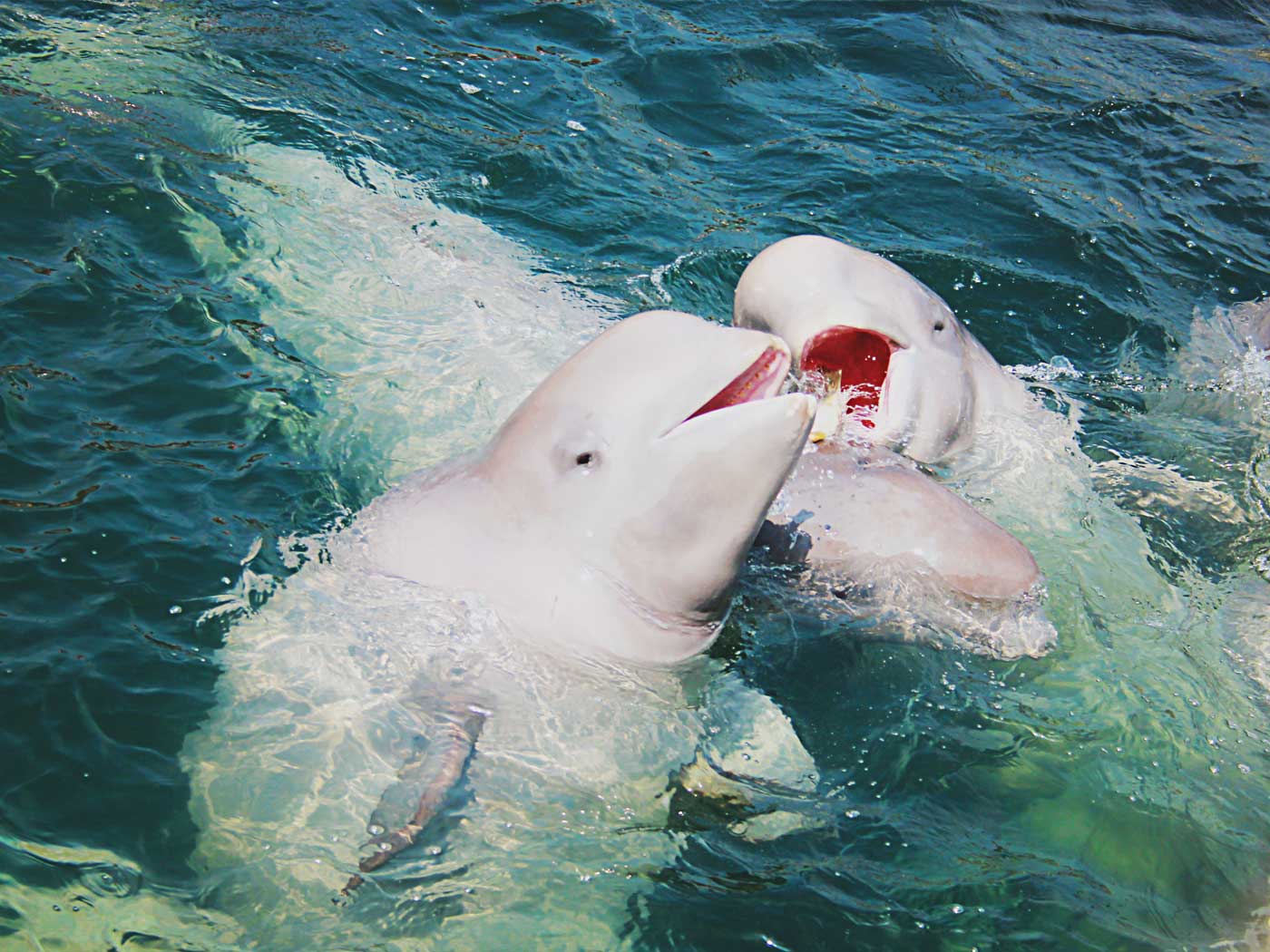 At the 75th annual meeting of the Society of Vertebrate Paleontology, held this year in downtown Dallas, the world's foremost fossil experts presented scores of research summaries. Researchers described extinct giant mammals from Argentina, one-of-a-kind bird fossils from China, and good-old North American classic dinosaurs. Amazingly, almost all of these fossil descriptions included phylogenetic (evolutionary) tree diagrams. Today's paleontologists show a religious-like devotion to fit their finds in an evolutionary tree. And with equally amazing regularity they describe problems with this process of constructing evolutionary trees. Are these problems significant enough to cast doubt on the whole exercise?
At the 75th annual meeting of the Society of Vertebrate Paleontology, held this year in downtown Dallas, the world's foremost fossil experts presented scores of research summaries. Researchers described extinct giant mammals from Argentina, one-of-a-kind bird fossils from China, and good-old North American classic dinosaurs. Amazingly, almost all of these fossil descriptions included phylogenetic (evolutionary) tree diagrams. Today's paleontologists show a religious-like devotion to fit their finds in an evolutionary tree. And with equally amazing regularity they describe problems with this process of constructing evolutionary trees. Are these problems significant enough to cast doubt on the whole exercise?
One poster described a duck-bill dinosaur (hadrosaur) called Tanius from China and provided two different phylogenetic tree options—an inadvertent but open admission that they don't really know which scenario is correct. Maybe neither. The poster authors wrote, "Tanius sinensis shows a complex of derived and primitive characteristic generating considerable character conflict and resulting in a loss of resolution among non-hadrosaurid hadrosauroids."1 In other words, instead of revealing itself as between other evolutionary forms, Tanius looked quite unique.
Similarly, one researcher offered a new take on the evolution of an extinct cat-like creature.2 Unfortunately for those who imagine that each creature falls neatly along imagined lines of descent, this study also generated more than one tree diagram. Their differences were based not on creature characters but on the statistical method used to position the creature in the various trees.
The same kinds of problems plagued attempts to fit Europasaurus onto an evolutionary tree.3 At fewer than 20 feet long in adulthood, this tiny sauropod is dwarfed by its normal-sized kin. One presenter used a well-preserved specimen to show the positions of the sauropod's cranial nerves. Various authors have proposed different places for Europasaurus on different trees, but the creature's unique arrangement of nerves suggested yet another tree needs to be manufactured.
These three examples illustrate dozens of evolutionary tree reassignments that formed a broad theme for the meeting. It seems that one can construct different phylogenetic trees from either different traits or statistical methods used to evaluate traits.
And who decides which traits to use in these constructions? The entire process appears to be steeped in arbitrary decision-making. And with the trees in such constant flux, it looks as though evolutionary researchers will never arrive at a certain story for any creature. Why do so many of these experts have such a difficult time sorting out what evolved from what?4
Tree-crafting will never end so long as belief in big-picture evolution reigns.
Accepting creation would resolve most of the confusion, bringing into focus the big picture. If God made each basic kind of creature, then they do not all share a common ancestor. Each kind would exhibit a unique set of created characters. No wonder all these wondrous creatures don't fit on an evolutionary tree—they never evolved.5
Under a creation model, researchers could categorize creatures into probable kinds, instead of imagining that all creatures are related. The continued failure to find harmony in phylogenies—after over 150 years—points to the failure of its underlying evolutionary assumptions that teach such things as Triceratops and T. rex having evolved from some unknown reptile. Would researchers find more success if they asked creation-based research questions, like how many horns adorned each variety (sometimes called "species") in the ceratopsian kind?
Until big-picture evolution gets booed off the stage, its presenters are doomed to unwittingly decry ever-changing and ever-problematic phylogenetic trees that retell evolutionary stories that never actually happened.
References
- Borinder, N.H. et al. 2015. Postcranial anatomy and phylogenetic affinities of Tanius Sinensis (Ornithopoda; hadrosauridea) from the Late Cretaceous of China. Poster no. B109. Dallas, TX: Society of Vertebrate Paleontology 75th Annual Meeting.
- Barret, P.Z., C.A. Boyd, and D.C. Pagnac. 2015. Taxonomic and phylogenetic revisions of North American Nimravidae. Poster no. B75. Dallas, TX: Society of Vertebrate Paleontology 75th Annual Meeting.
- Schmitt, A., F. Knoll, and E. Tschopp. 2015. Paleoneurology of Eurposaurus holgeri, an insular dwarf sauropod from Northern Germany. Technical session XVII, 2:45pm. Dallas, TX: Society of Vertebrate Paleontology 75th Annual Meeting.
- The most serious problem with the whole exercise is its circularity. Researchers first assume that a certain collection of fossil forms share ancestry, according to standard evolutionary thought. Then they plot those forms onto a diagram resembling a family tree, only to conclude the very premise with which they began—that these creatures shared an ancestor.
- See Thomas, B. and F. Sherwin. 2009. Darwin's Withering Tree of Life. Acts & Facts. 38 (5): 16.
*Mr. Thomas is Science Writer at the Institute for Creation Research.
Article posted on October 28, 2015.
























